Asian Chicken Salad with Zippy Sesame Dressing
This Asian chicken salad with Zippy Sesame Dressing has all of the flavors and textures that you expect when you crave an Asian salad: crunchy, soft, juicy, creamy, with the right amount of zip in the dressing.
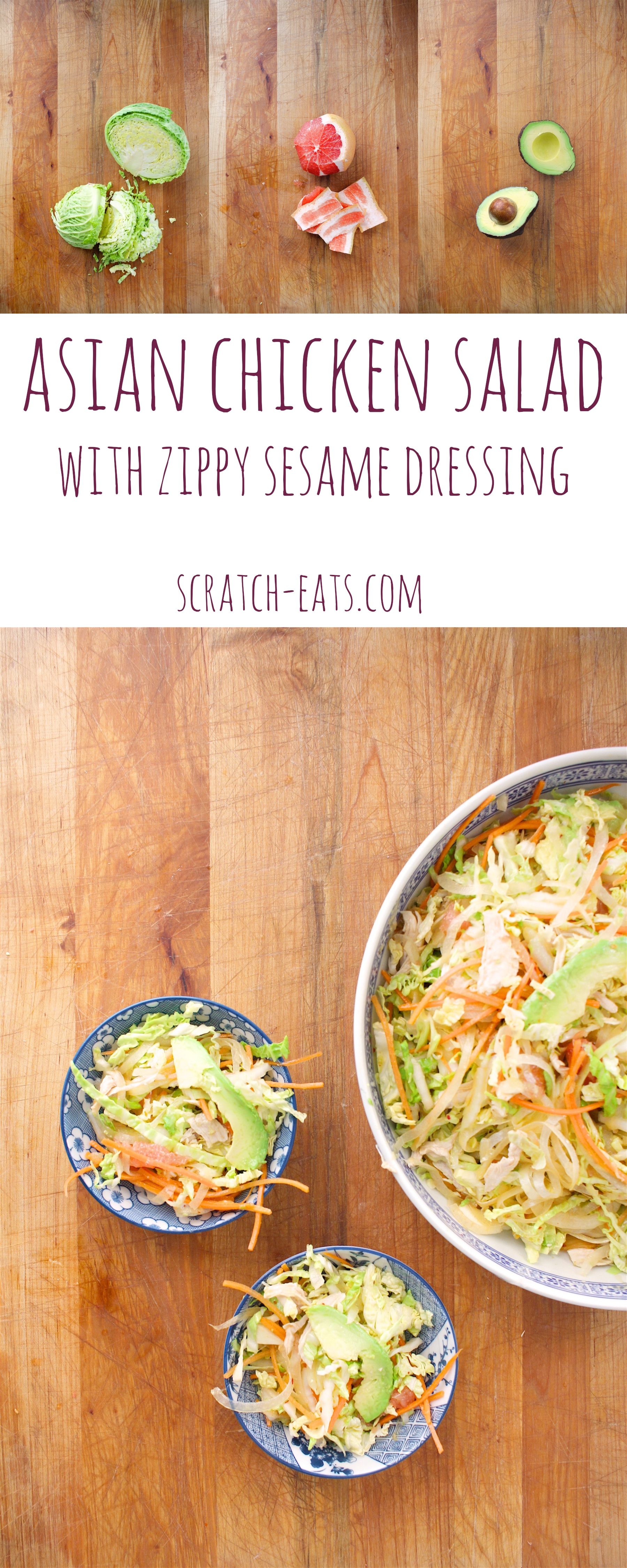
This salad, you guys. It’s magic. It has everything I dream of in a good salad, you know? Ask yourself what you want in a good salad. For me, it’s lots of contrasting but complimentary textures and flavors, and an amazing dressing. And this dressing really is the star of the show.
But a salad doesn’t exist with the veg, so first, let’s talk produce.
So first things first, the greens. I use a mix of hakusai, a.k.a. Nappa cabbage and Savoy cabbage. But regular ol’ green or even red would work beautifully here as well. (Just make sure you slice them paper paper thin. I always use a mandoline slicer) This time I went with the Savoy and Nappa combo because I like the extra juicy crunch of the Nappa, plus it’s just so … you know, Asian. I grew up on it and the flavor is just right. Savoy, I like because it’s a softer, milder cousin to the classic green cabbage. It adds good heft to the salad without too much distracting texture. And come on, it’s so pretty!
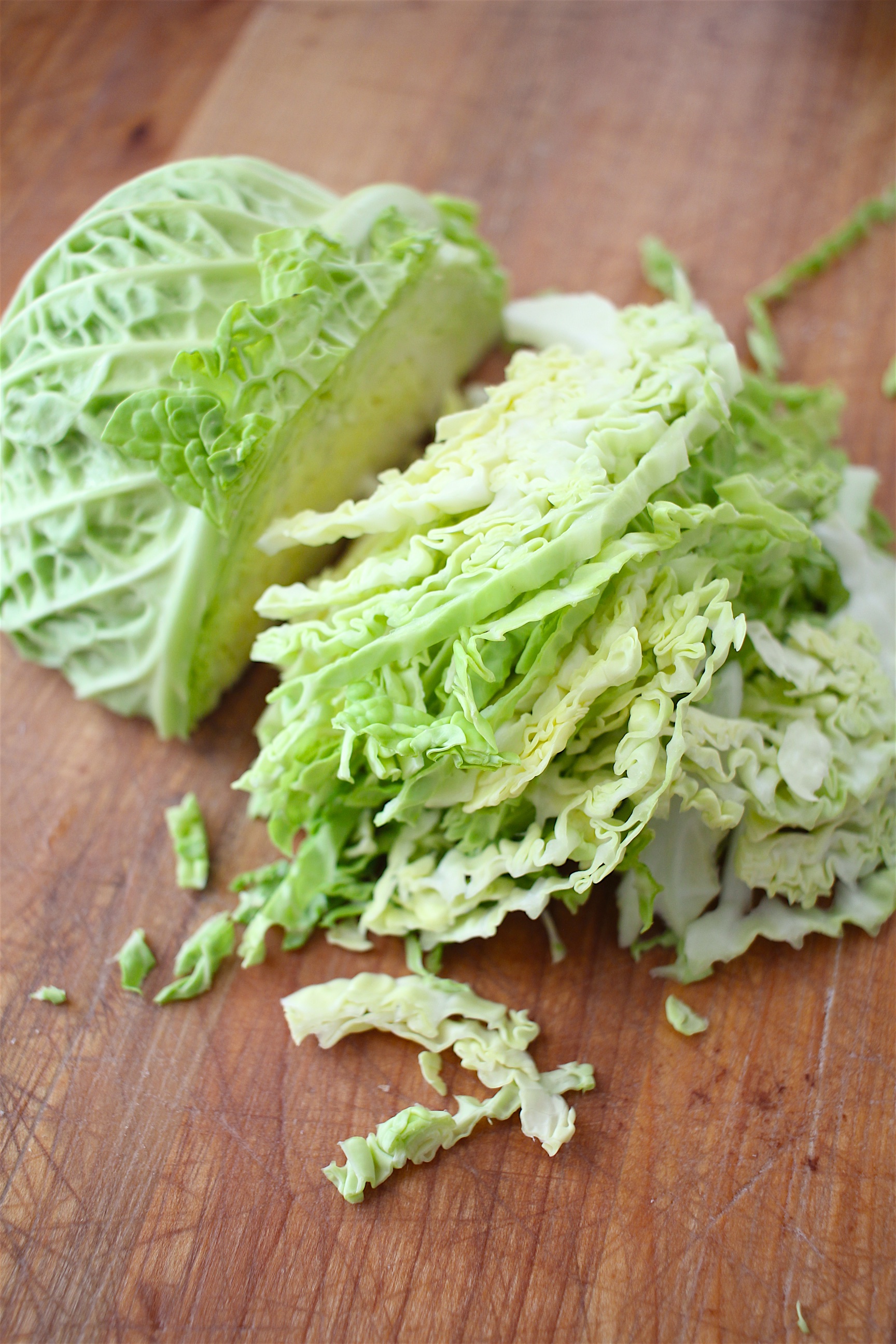
So you know the food court Asian chopped salad and how they have those canned mandarin oranges? Yummy, but I thought it was time for a grown up version so I went with grapefruit. Now, if grapefruit isn’t your thing, navel oranges are fantastic, too. But grapefruit IS MY thing, so I’m sticking with it. Pink, white, whatever you can find, it works. And it’s worth it to go through the process of cutting out the segments, also called suprémes.
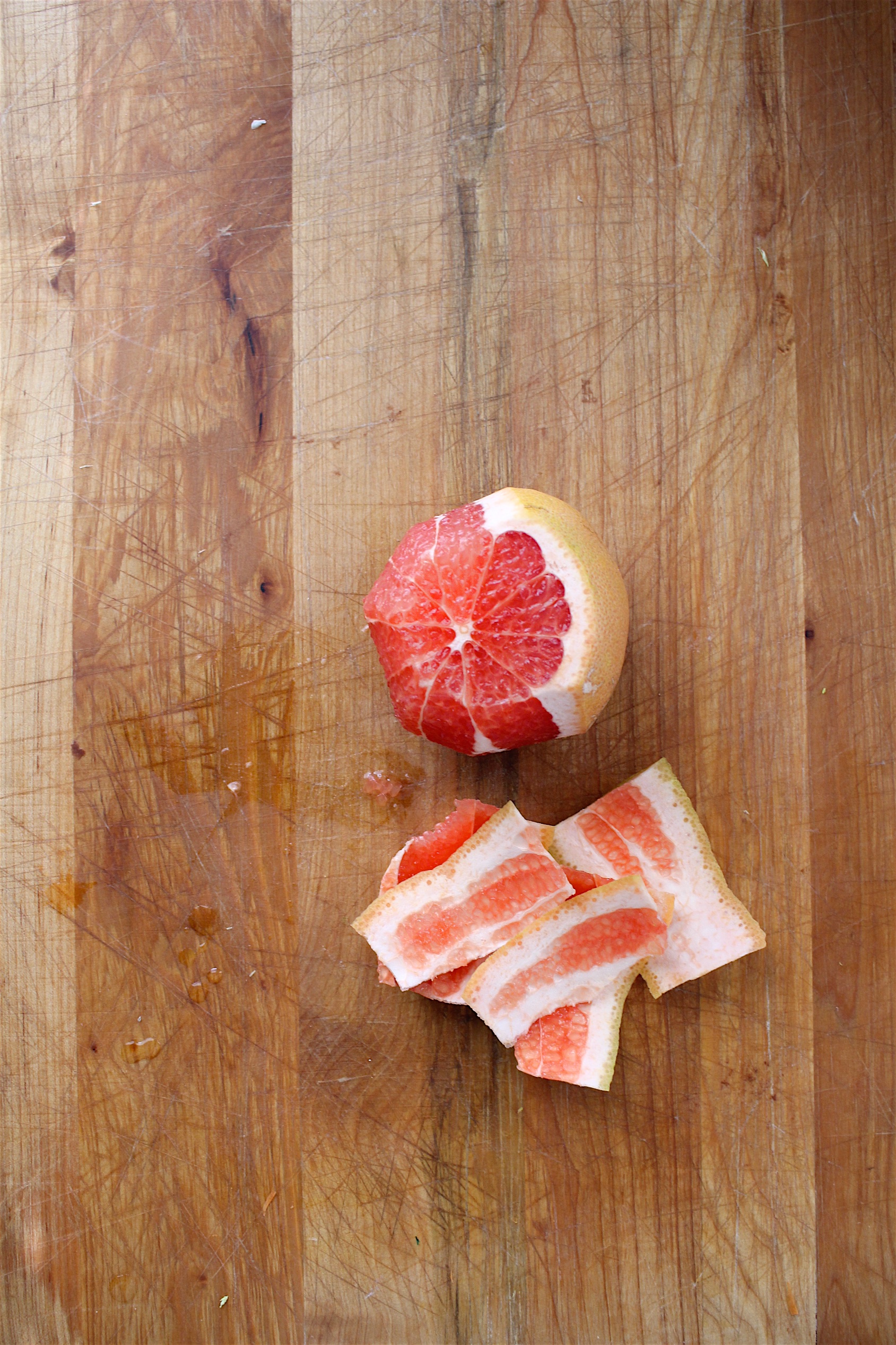
Onions. I know people can be in the I-hate-raw-onions camp, and I feel ya. But I have a trick that might change your minds. Slice them super thin on the mandoline slicer, soak in cold water for up to 30 minutes, exchanging the water 2-3 times. This takes that harsh edge off the the flavor, but leaves that mellow-sweet onion taste and the awesome watery crunch that this salad just neeeeeeds. Please give it a chance, even if you are of the above mentioned camp.
Avocado … do I even need to go into this? It’s my favorite. Creamy, yummy, goes with practically everything and my life would be incomplete without it. Yeah, that avocado. It’s a must. Don’t skimp.
And, of course no chicken salad would be complete without chicken. I poached and shredded it. It’s really my favorite way for this. Clean flavor, and the shreds … the best.
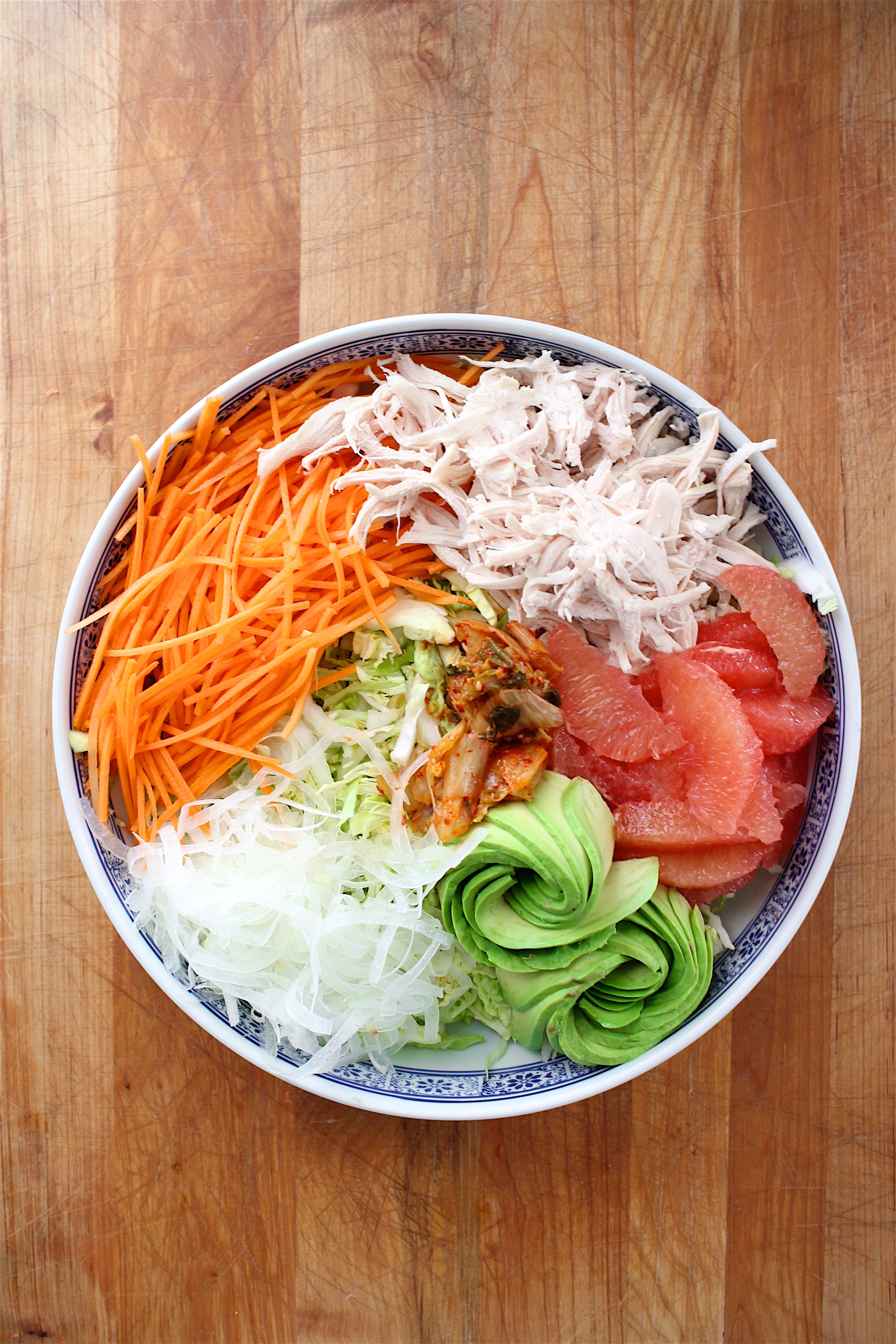
Kimchi. Yup, I went there. Fermentation, guys, fermentation. We know how I feel about fermentation, right? Wait, you don’t? Short answer, you need it. Long answer, look here and here.The problem is not all kimchi is made equal. It all depends on your palate, but I find some are too sour, some are a little past the funky-smell level that you might like, some are just right. I’m planning on teaching you how to make your own someday, but for now, don’t give up on kimchi if you didn’t like it after only one try. Try a different brand. You mouth and gut will thank you.
And last but definitely not least is the ever-reliable carrot. Carrots are one of those veggies I always always always have in my fridge. So useful! Soup, stock, salad, noodles, sauce, everything. I love them. In this application, you can either julienne them or use the spiralizer. My spiralizer is unfortunately in storage (perks of moving around a LOT, long story), so I went with a simple juilenne. Make quick work of it with the … yup, you guessed it, handy dandy mandoline slicer.
Ok lets get back to the dressing.
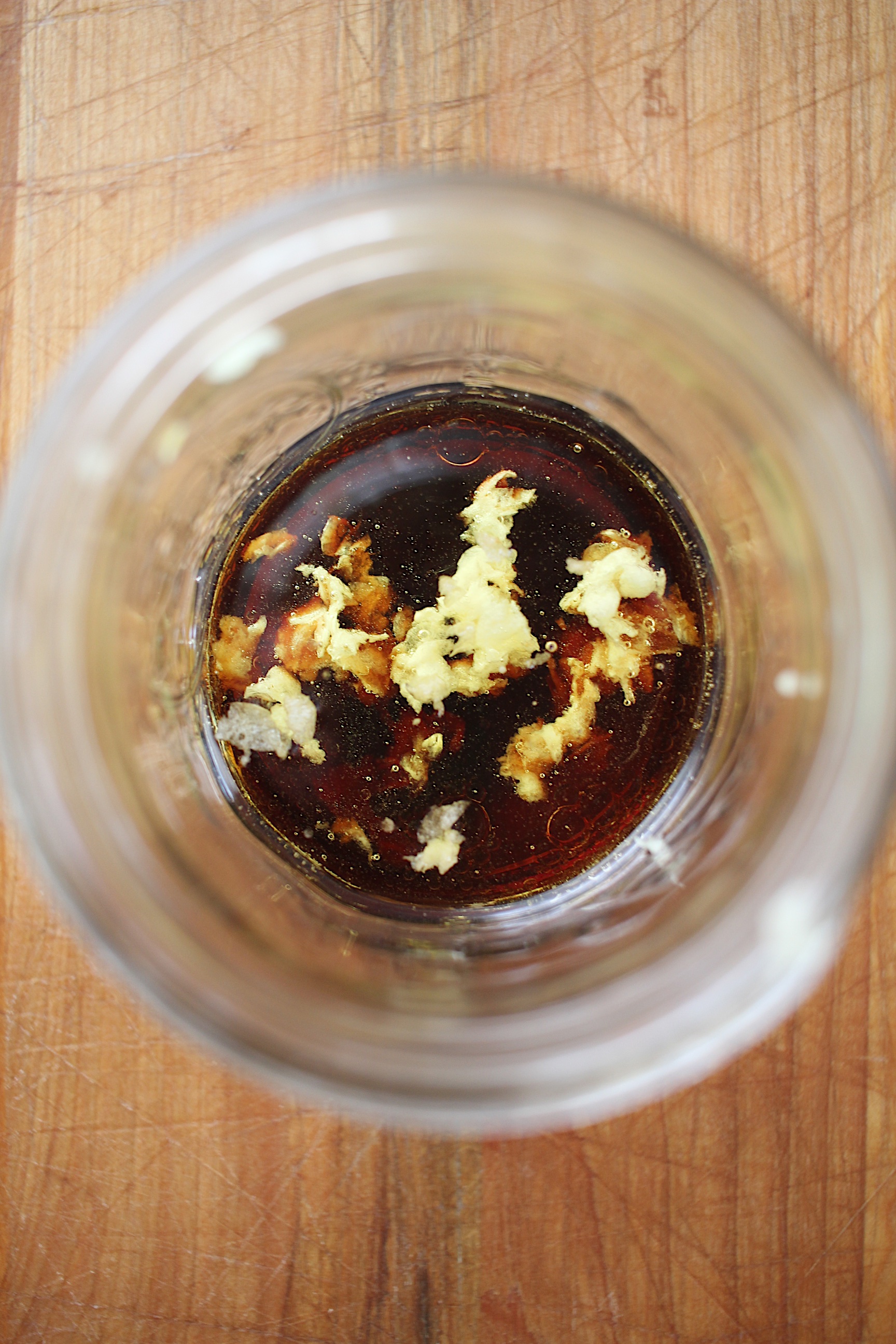
First of all, I use avocado oil as a base. Avocado oil has a mild flavor and is super nutritious. It’s also extracted very safely so you don’t have to worry about chemical processes or additives when using it in your meals. It’s my new favorite oil for cooking, and for dressings where you want a clean flavor as a backdrop, like this one.
My next important ingredient is a little harder to find, which I know can be discouraging. But so worth it when you do find it! I use brown rice vinegar. Lets talk about rice vinegar for a second. See, rice vinegar is one of those ingredients that never used to be available at all here in the US until sushi became popular in the, what, 1980’s? And people wanted to make it at home, so instead of pure, properly fermented vinegar becoming available, shortcuts were made. Inexpensive rice vinegar, especially the ones that are labeled “seasoned”, have all sorts of unwanted ingredients like monosodium glutamate (MSG), high fructose corn syrup (HFCS), and because they haven’t gone through a proper fermentation process, there’s often added alcohol to make up for it. No thanks.
My preferred vinegar is this one. It’s pure, has 2 ingredients (brown rice and water), and is a traditional vinegar in the sense that it’s been fermented. (For a paleo-friendly variation, use apple cider vinegar or fresh lemon or lime juice. Different flavor, but still fantastic)
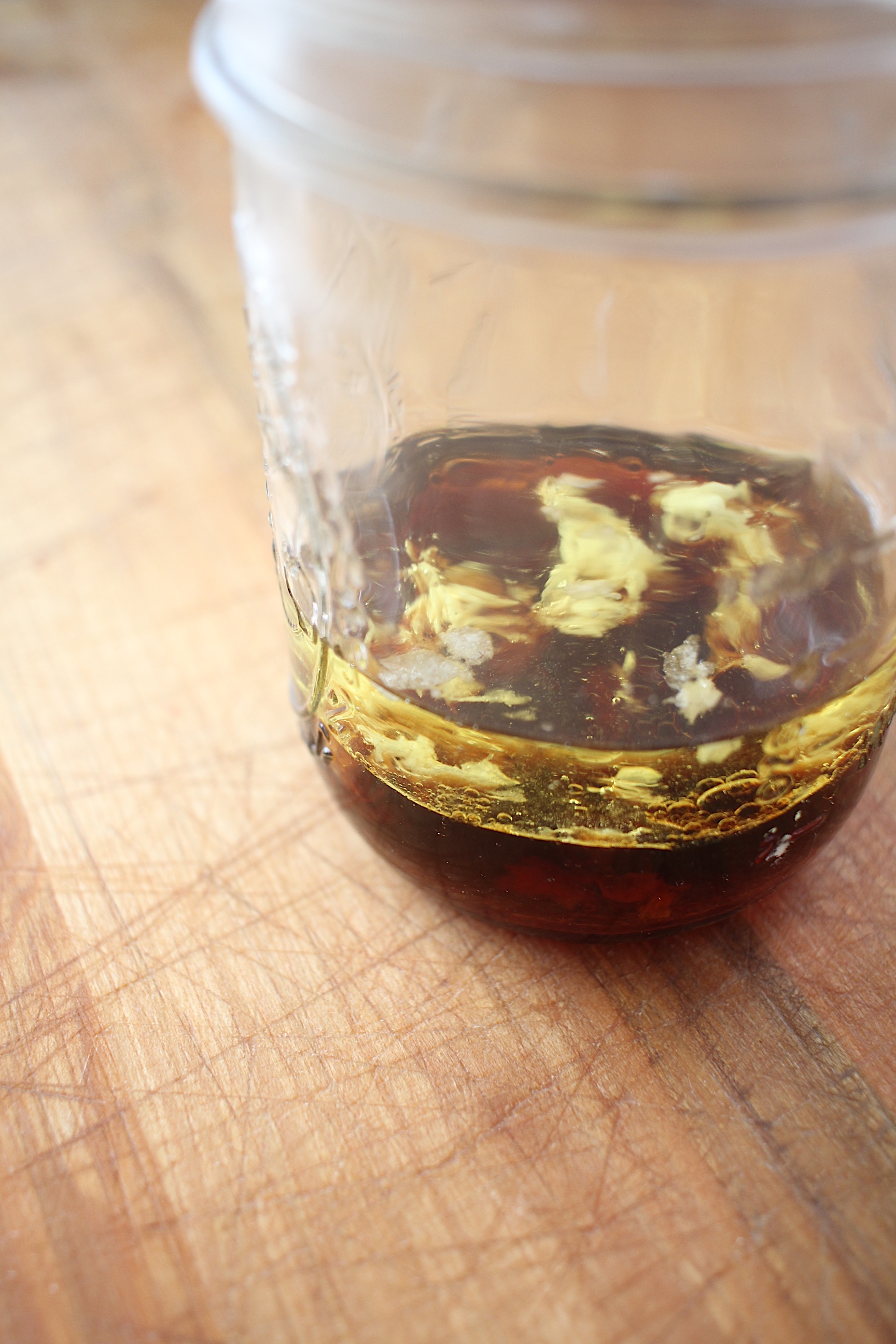
Last ingredient I want to talk about is soy sauce. Most people have a bottle in their fridges. Some people feel some level of loyalty to the brand they buy and some people just buy the cheapest they can find. I’m super loyal to my bottle (in fact, I have about 4 unopened bottles in my pantry right now in case my store runs out), and I’ll tell you why. It all comes down to flavor and quality for me. See, soy beans are one of the top 3 genetically modified organisms in American agriculture today, along with corn and canola. And though I know that GMO-related issues are pretty controversial, I just don’t feel comfortable putting them into my body where I can avoid it. So when it comes to any product that comes from corn or soy (I don’t even buy canola oil), I always stick to non-GMO verified and USDA certified Organic. (FYI if it’s certified organic, it’s automatically non-GMO) I’m particular about brand because of flavor, so I buy this guy, but this is also a great substitute. Of course, if you need a gluten free or paleo-friendly alternative, you can use tamari or coconut aminos, though the flavor will be different. Still good, though! (if you use coconut aminos instead, I would omit the maple syrup. Coconut aminos is a lot sweeter than soy sauce)
And to all of those ingredients you add some garlic and ginger, a splash of pure maple syrup, and toasted sesame oil, shake it like you mean it, and you have the best Asian salad dressing.
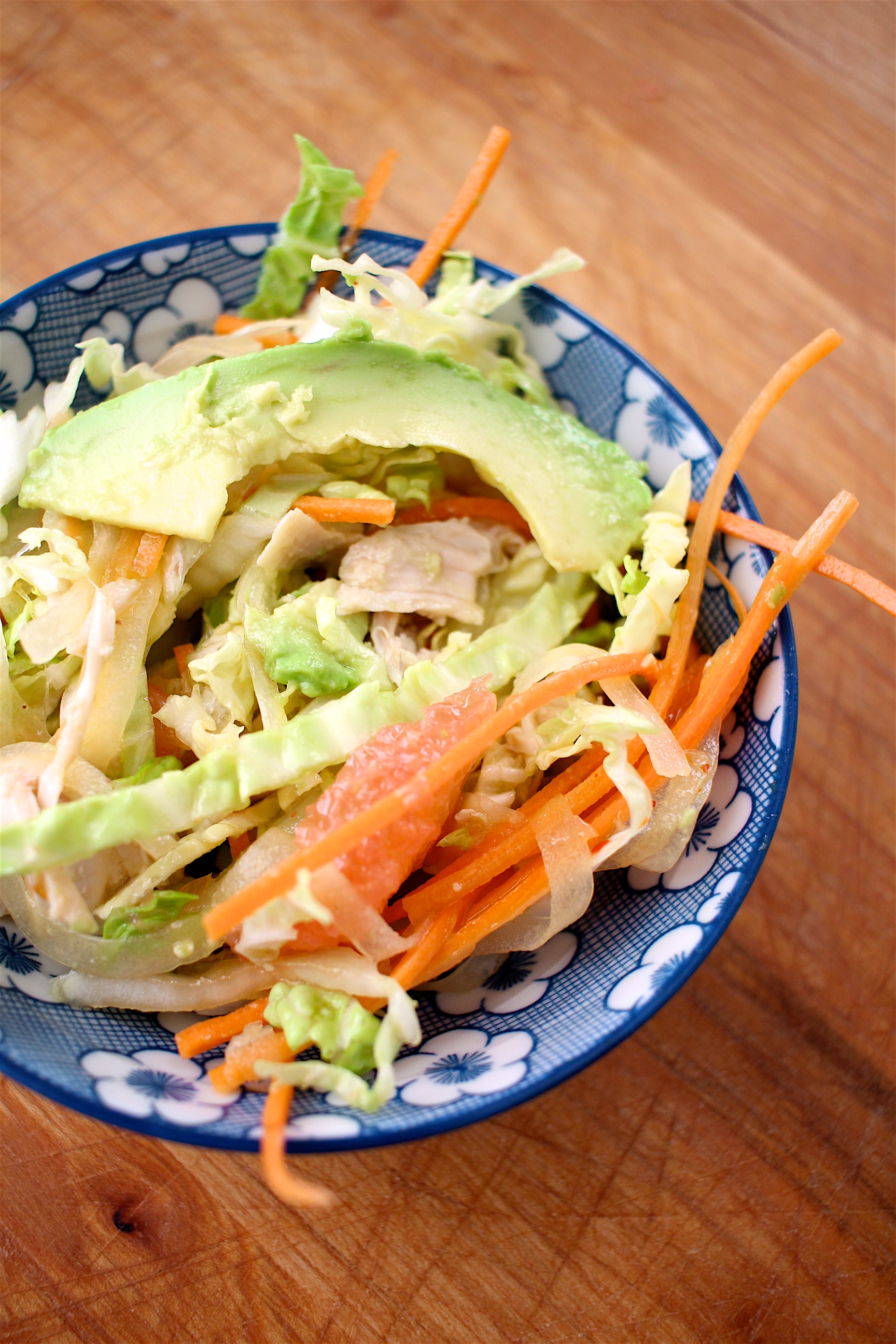
Now, who doesn’t want that for lunch? Enjoy!


- 1/2 large onion, sliced very thinly, preferably with a mandolin on the thinnest setting
- 1 chicken breast, preferably free range and organic
- fine unrefined sea salt
- 1/2 head Nappa Cabbage, washed and sliced thinly
- 1/2 Savoy cabbage, washed and sliced thinly
- 2 medium carrots, julienned
- 2 grapefruit, cut into segments*
- 1 avocado, sliced thinly
- kimchi, to taste
- 3 tablespoons avocado oil
- 1 tablespoon toasted sesame oil
- 2 tablespoons brown rice vinegar**
- 1 teaspoon pure maple syrup
- 1 medium garlic clove, grated
- 1/4 teaspoon freshly grated ginger
- 1 tablespoon soy sauce, preferably organic***
- Slice the onions into a bowl of cold water. Let soak for 15~30 minutes, replacing the water 2 or 3 times. Drain completely in a fine mesh strainer.
- In a medium sauce pan, add about 1 inch of water and season with roughly 1 teaspoon of salt. Bring the burner to the lowest heat possible. Once you see steam coming off the top and tiny bubbles forming in the bottom, add the chicken and cover. It shouldn't quite be at a simmer. Cook for 10~12 minutes, depending on the size of the chicken breast, until cooked through. Be careful not to overcook. Immediately remove from the pan and set aside to cool completely. Once cooled, shred the chicken.
- In a medium sized jar with a tight fitting lid, add all of the ingredients for the dressing. Shake vigorously to combine, and set aside to allow flavors to marry.
- In a large bowl, add the cabbages and arrange the shredded chicken, onion, carrots, grapefruit, avocado, and kimchi. Give the dressing another shake and then pour over the salad. Start with about half and add more to taste. Toss the salad and serve immediately.
- * To segment (or supréme) a grapefruit, cut off the top and bottom. Then, following the curve of the sides, and using a very sharp knife, slice off the peel. Hold the skinless grapefruit in your hand and carefully slice out each section but following the inside of the pith. Remove each segment and use in the salad.
- ** For a paleo-friendly variation, use raw apple cider vinegar or fresh lime juice
- *** Make sure to use gluten free soy sauce or tamari in you need a gluten free variation or coconut aminos for a paleo-friendly variation.
Comments
- Homemade Kewpie Mayonnaise - Scratch Eats - […] brown rice vinegar. I went deeper into the topic before, so I won’t talk about it too much here.…



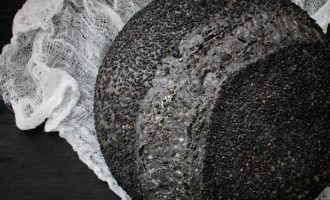
ErnestCox
August 13, 2018
台北-中和【均媄醫美診所】─台北微整形、童顏針、玻尿酸最推薦的醫美診所! http://micro-plastic.com/